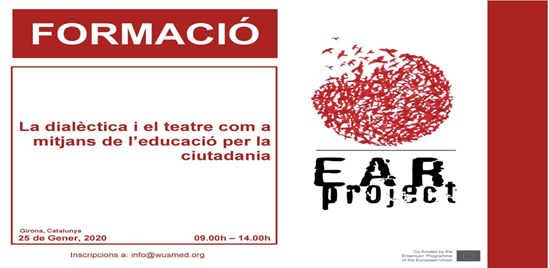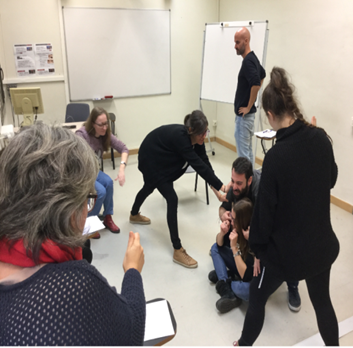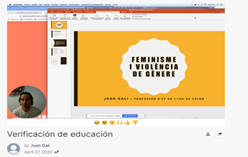
The goal of EAR training is to enhance the citizenship competences of secondary school students through the dialectics, and theater and to achieve this goal one previous step is the training of teachers.
This training has been very welcomed by secondary school teachers and youth educators in our country. Our secondary schools have a high level of cultural diversity, and students with specific social and education needs, and teachers and educators don’t feel enough trained to face these challenges.
The possibility to learn more about the dialectical and theater methods, apply them in the classroom or educational settings, and discuss the usefulness of these implementation with colleagues and students has helped the participants to feel more comfortable and competent to achieve the educational goals in the field of citizenship.
The program plan has been focused on five specific topics:
Topic 1: Valuing cultural diversity: Interculturality.
Topic 2: Conflict-resolution skills: Dialogue versus violence.
Topic 3: Valuing human dignity and human rights: Citizenship.
Topic 4: Critical understanding of history, environment and sustainability: Analyzing literature and art to discover the underlying morals and ethics.
Topic 5: Autonomous learning skills: Self-regulation.
These topics have been selected taking into account the “Reference framework of competences for democratic culture” developed by the Council of Europe, the competences and contents required at our country for the secondary school curriculum, the analysis of needs collected in conversation with renowned expert teachers, and agreed with the EAR partners in a way that has allowed us work complementarily and don’t overlap.
One of the more innovative aspect of the EAR training has been the methodology. For most participants, both trainers and trainees, has been the first time using jointly dialectical and theater methods to plan and implement teaching. Learn how to use interdisciplinary knowledge and methods that belong to disciplines other than the previous training of each one, has been a challenge.
Some examples of this methodology that include dialectics and theatre, are:
Simultaneous improvisation
The participants, placed in two concentric circles, so that each participant in the inner circle is face to face with a participant in the outer circle, initiate an impromptu dialogue based on a sentence proposed by the trainer. The activity continues changing the position of the participants and starting new dialogues with new couples.
What are you doing and how do you feel?
Participants, in a circle and alternately represent an action and a mood. The fellow on the right asks him what he is doing and how he is feeling.
The tunnel
A moral dilemma arises (e.g. that of a girl who knows the family business is throwing waste into the river and doubts whether to say it or hide it). One participant plays the role of the girl and the others in two rows form a tunnel. The girl slowly passes through the middle of the tunnel and her classmates express reasons to say so and reasons not to.
Forum theater
It depicts a scene in which there is an oppressor, an accomplice and a victim. The scene is discussed and performed a second time and any participant can take on the role of the accomplice or the victim and streamline the dialogue. It will give option to new analyzes of the situation.
Definition of a concept with the dialectical method
Participants are asked in pairs, one has to define a concept (eg love) and the other has to ask questions to arrive at a new definition of the concept.
Some images of the making of
After the first face to face training the participants planned their own educational scenario with the online support of the trainers. They also could consult the collection of dynamics and content worked on in the first session and the bibliography posted on the EAR platform in order to create their own scenario.
The educational scenario had to include the following points:
a. Personal presentation
b. Contextualization of the unit
-Contextualization of the place where it will take place on stage
-Number of participants
-Age and type of students
-Space
c. Objectives of the scenario
d. Sequencing
e. Theatrical and dialectical resources to implement
f. Process assessment and experience assessment
Due to the exceptional circumstances due to the covid-19 and the impossibility of doing a second face-to-face session, it was conducted online. This online session consisted on the online presentation of the teaching units that the participants had created and the subsequent assessment (self-assessment and co-assessment).
New challenges
We are currently working on two lines:
– The implementation into the classrooms of the scenarios prepared and evaluated in the first edition of the course
– The preparation of a second training edition, creating new tools that allow do the training completely online.




